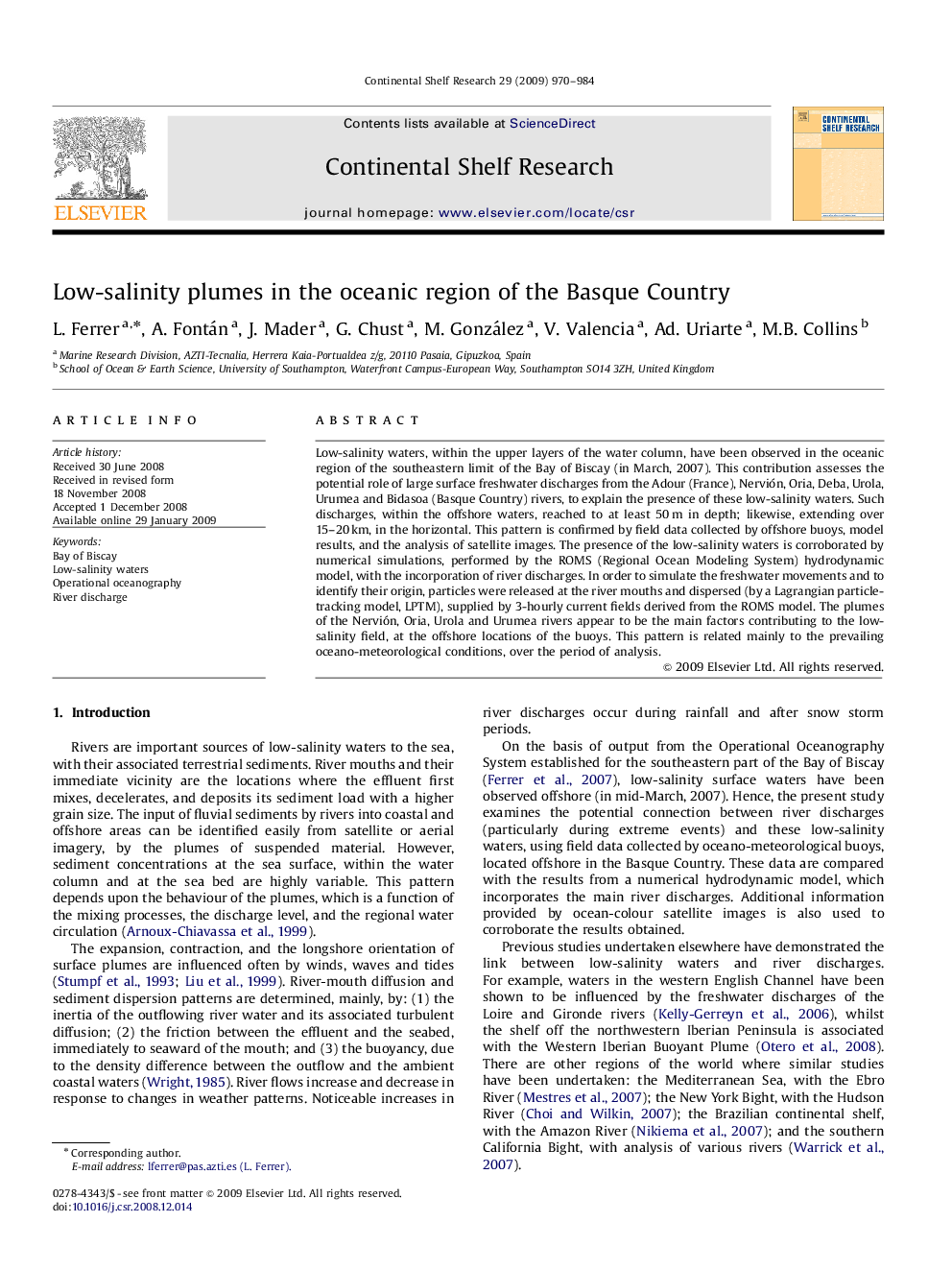| Article ID | Journal | Published Year | Pages | File Type |
|---|---|---|---|---|
| 4533060 | Continental Shelf Research | 2009 | 15 Pages |
Abstract
Low-salinity waters, within the upper layers of the water column, have been observed in the oceanic region of the southeastern limit of the Bay of Biscay (in March, 2007). This contribution assesses the potential role of large surface freshwater discharges from the Adour (France), Nervión, Oria, Deba, Urola, Urumea and Bidasoa (Basque Country) rivers, to explain the presence of these low-salinity waters. Such discharges, within the offshore waters, reached to at least 50Â m in depth; likewise, extending over 15-20Â km, in the horizontal. This pattern is confirmed by field data collected by offshore buoys, model results, and the analysis of satellite images. The presence of the low-salinity waters is corroborated by numerical simulations, performed by the ROMS (Regional Ocean Modeling System) hydrodynamic model, with the incorporation of river discharges. In order to simulate the freshwater movements and to identify their origin, particles were released at the river mouths and dispersed (by a Lagrangian particle-tracking model, LPTM), supplied by 3-hourly current fields derived from the ROMS model. The plumes of the Nervión, Oria, Urola and Urumea rivers appear to be the main factors contributing to the low-salinity field, at the offshore locations of the buoys. This pattern is related mainly to the prevailing oceano-meteorological conditions, over the period of analysis.
Related Topics
Physical Sciences and Engineering
Earth and Planetary Sciences
Geology
Authors
L. Ferrer, A. Fontán, J. Mader, G. Chust, M. González, V. Valencia, Ad. Uriarte, M.B. Collins,
